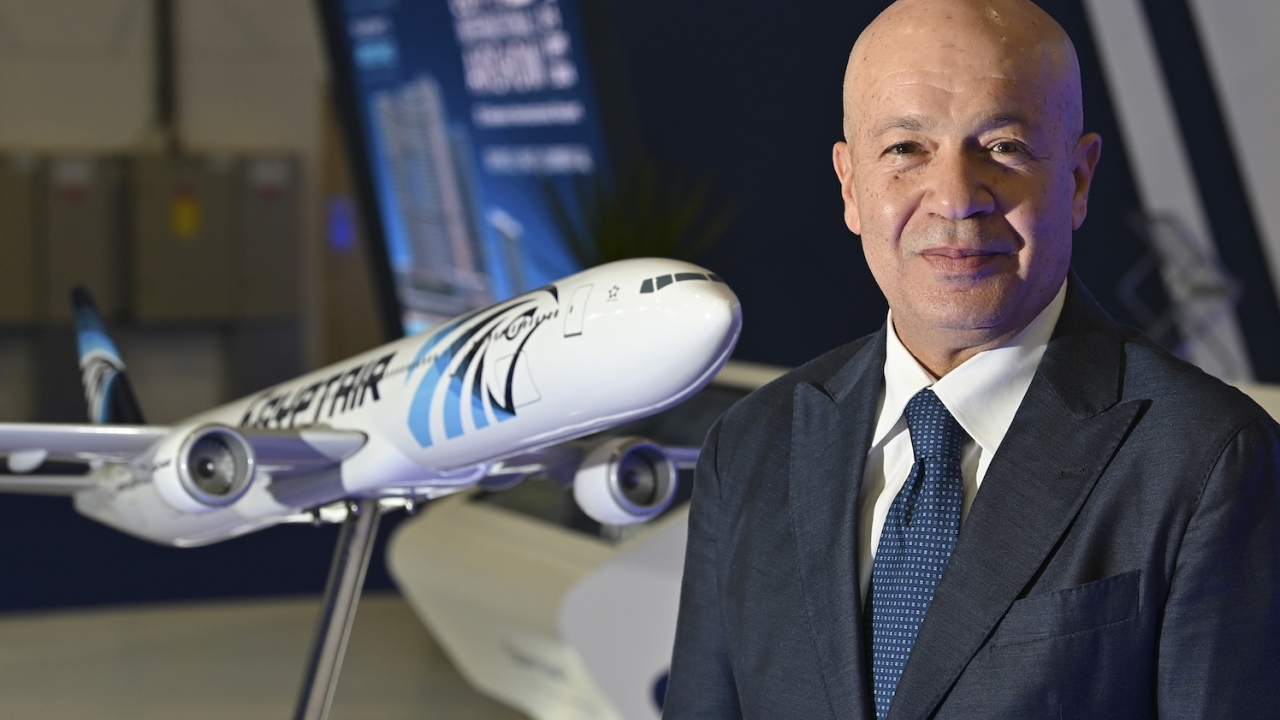Mixed blessing - EgyptAir happy to have an assorted fleet
Egypt’s national airline is prepared to trade off the complexities of a disparate fleet in order not to find itself suffering the engine reliability problems that have hit many other airlines.

Yehia Zakaria: “We don’t like to put all our eggs in one basket.” Image: EgyptAir
EgyptAir is prepared to accept the disadvantages of a heterogenous fleet, to help hedge against the engine problems being experienced by several new-generation aircraft types, the airline’s chairman says.
EgyptAir Holdings chairman and CEO Yehia Zakaria made the comments after the airline announced two aircraft deals at last November’s Dubai airshow – one for 18 leased Boeing 737 MAX 8s and the second for the purchase of 10 Airbus A350-900s.
Announcing the Airbus order, Zakaria said that the A350-900s will be delivered between 2025-2027. They will be powered by Rolls-Royce Trent engines.
The internal configuration has not been detailed, but the new twinjets will carry 340 passengers; the A350 can typically carry between 300-410 passengers, depending on model and cabin layout. Zakaria said the new aircraft would be used on long-haul sectors, including Shanghai and Los Angeles.
They will be funded from the company’s internal resources and are likely to augment, then eventually replace the airline’s current Boeing 777-30 flagships.
The 737 MAX 8s, meanwhile, will be acquired from US-based Air Lease Corporation, with deliveries from early 2025 and through 2026. The MAX 8s’ longer range compared to the 737-800s that make up the bulk of the airline’s short-haul fleet will enable them to fly further into Europe and Africa, allowing the company to open new routes with lower costs than using widebody equipment.
The new Airbuses and Boeings will be used to increase the fleet rather than replace existing aircraft, as the company seeks to scale up from its current 80-plus aircraft to 125 by 2028.
However, this means that the Egyptian national carrier will have an even more varied fleet, including Boeing 777s and 787s, earlier -800 variants of the 737 and Airbus A220s, A320/321s and A330s.
Asked if the company was not facing the complexities of an increasingly fragmented line-up, Zakaria said: “Of course, but we like diversity of aircraft. We don’t like to put all our eggs in one basket.”
Both the CFM International LEAP and the Pratt & Whitney GTF families of new-generation turbofans have experienced significant problems in recent years, with unexpectedly poor durability – particularly in hot, dusty conditions – and, in some cases, risks of component failure.
These have led to much more frequent engine inspection regimes and shop visits, creating major scheduling problems for some carriers.
This situation has been a factor in EgyptAir holding back from disposing of some of its older aircraft, such as Airbus A330-200s and -300s and Boeing 737-800s. The latter type, for example, uses the CFM56-7B, which Zakaria praised as a very reliable powerplant. For similar reasons, “We will keep the A330” – with its previous generation engines – “for as long as we can.”
Every cloud has a silver lining and problems with newer-generation engines may provide a windfall for the company’s long-established engineering arm, which handles considerable amounts of third-party work. Among airlines that send their engines for overhaul and repair are Turkish, RwandAir, Saudia, Flynas and TAP Portuguese, Zakaria noted.
The larger fleet is required to enable EgyptAir to increase its route network. It flies to around 70 destinations at present but plans to increase this to around 100 over the next four years.
A tourist typically “doesn’t care about the type of aircraft [he’s flying on], he just cares about whether it’s clean and the seats are good and the IFE works.” Most passengers are not clamouring to be on the latest-generation aircraft, he said. “But if they find that the seats or something else are in bad condition, they won’t come back.”
Tourism is a significant component of Egypt’s economy, with 18 million visitors predicted to arrive in the country this year and EgyptAir plans to increase the percentage of those visitors using its flights.
Stay up to date
Subscribe to the free Times Aerospace newsletter and receive the latest content every week. We'll never share your email address.


